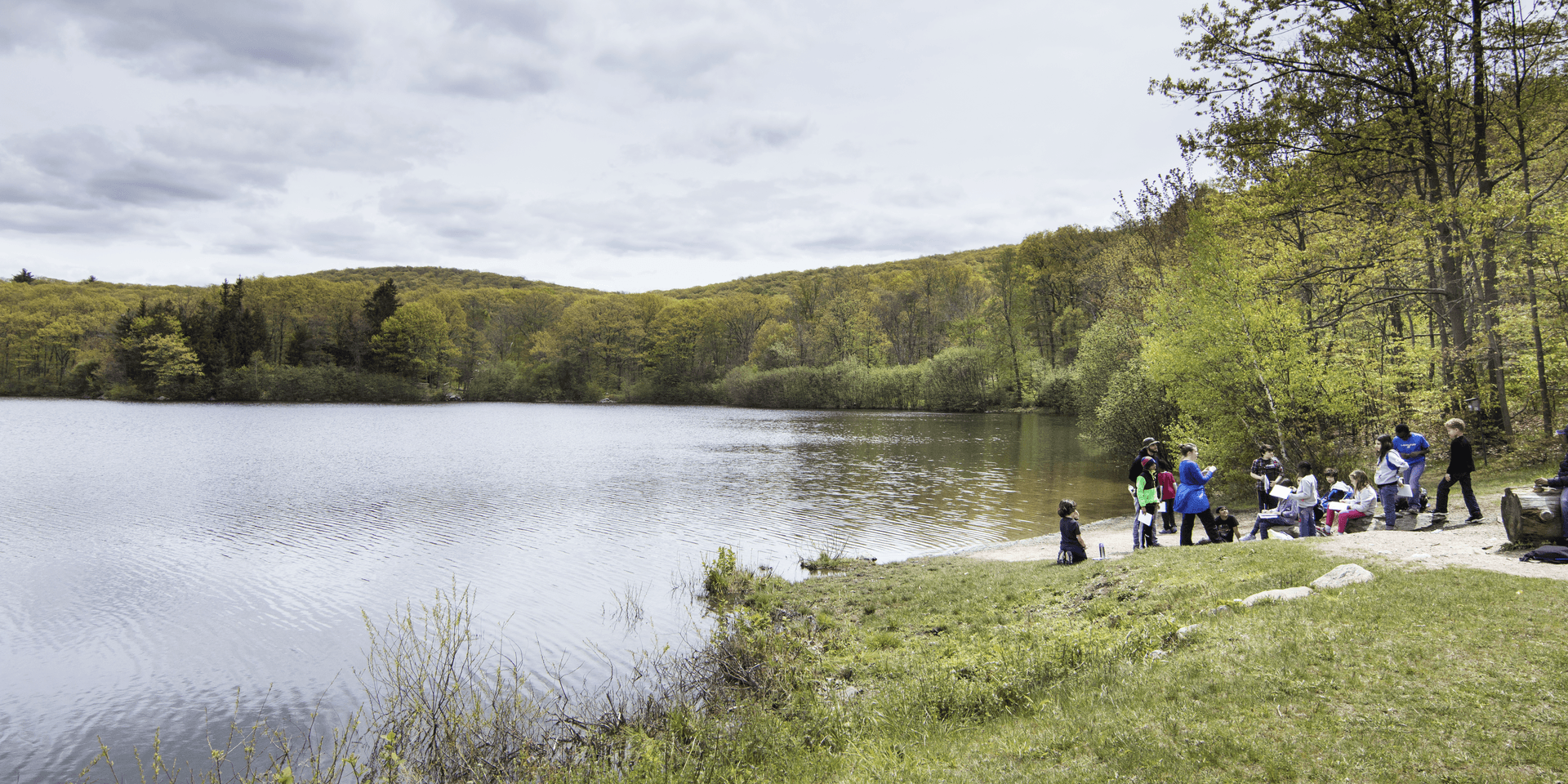You are here
The Black Rock Forest is a 3,870-acre area designed for scientific research, education, and public enjoyment. Managed by the Black Rock Forest Consortium, this land hosts thousands of visitors each year and promotes a mission of careful forest and ecosystem management. There are panoramic views of the Hudson Valley from mountaintops, reservoirs that supply the local communities with drinking water, and over 30 miles of trails for hiking, biking, and cross-country skiing. It is the largest area in the Hudson Highlands with a sustained elevation over 1,200 feet, and it has been an important and valuable area to the local residents for centuries.
There are several access points to the park: The primary parking area is located off of Route 9W and Reservoir Road. From here, a half-mile road leads up to a science center, where there is additional parking. Other starting areas are off of Pecks Road (farther north on Route 9W), near the end of Mine Hill Road in Cornwall, and at the western corner of the park on Old Mineral Springs Road.
The longest trails in the forest are the white-marked Scenic Trail (5.9 miles) and the yellow-marked Stillman Trail (which begins in Storm King State Park and extends to Schunemunk Mountain). There are trails to mountaintops like Black Rock (1,402 feet), Mount Misery, and Rattlesnake Hill, as well as paths around water bodies such as Aleck Meadow Reservoir, Arthur’s Pond, and the Upper Reservoir. (Sutherland Pond is the only area where swimming is permitted.)
Near the center of the forest is the White Oak Tree, which has a very large trunk and a sitting area for activities. The prolific trail system throughout this forest makes it possible to be inventive with trail combinations and journeys around the land. Caution should be exercised when hiking on these roads, as they are used by vehicles driven by scientists and researchers with special permits.
The bedrock that forms this section of the Appalachian Mountains is Precambrian gneiss. It was formed over 1.1 billion years ago, making it some of the oldest rock in New York State. Black bands of magnetite within the bedrock give the forest its name. With the retreat of the glaciers about 14,000 years ago, the first trees began to grow. Native communities hunted throughout the region and built settlements. By 1690, Europeans began colonizing the area and eventually the Continental Road was built as a connection for George Washington’s army between West Point and Newburgh. At this time, Spy Rock (1,463 feet) was a key lookout point that allowed the Continental Soldiers to monitor vessels sailing up the Hudson River from Haverstraw Bay.
This region was logged and mined extensively into the 19th century. More homesteads and farms continued to populate the lowlands, and the depletion of its resources eventually led to a large decline in the property’s value. In 1928, it was acquired by Dr. Ernest Stillman, who began conducting restoration research on the land. He later donated the area to Harvard University, his alma matter, to continue his efforts. In the 1960s and 1970s the New York-New Jersey Trail Conference constructed many of the wooded trails. In 1989 it was purchased by William Goldman, who donated all of the property to the not-for-profit Consortium to continue Stillman’s research spirit and conservation initiatives.
In 1999, the Consortium opened a Center for Science and Education on Whitehorse Mountain. It displays a fantastic array of award-winning sustainable green technologies and hosts a laboratory, classroom, and data management facility that has many visitors each year. There are no exhibits. The latest addition to the forest was a purchase by the Consortium, the Orange County Land Trust, and Open Space Institute to protect the region between Black Rock and Schunemunk State Park and allow a passage for wildlife between the mountains.
When enjoying the land, be mindful of the wildlife and check yourself for eastern deer ticks, which spread the inflammatory Lyme disease. The forest is closed for hunting seasons throughout the year, so check the Black Rock Forest website before making your visit. The Consortium is dependent on voluntary contributions to help cover the expenses of maintaining the forest, and any help to aid their efforts is greatly appreciated.
Logistics + Planning
Current Weather: Powered by Dark Sky
























Comments
Sign In and share them.